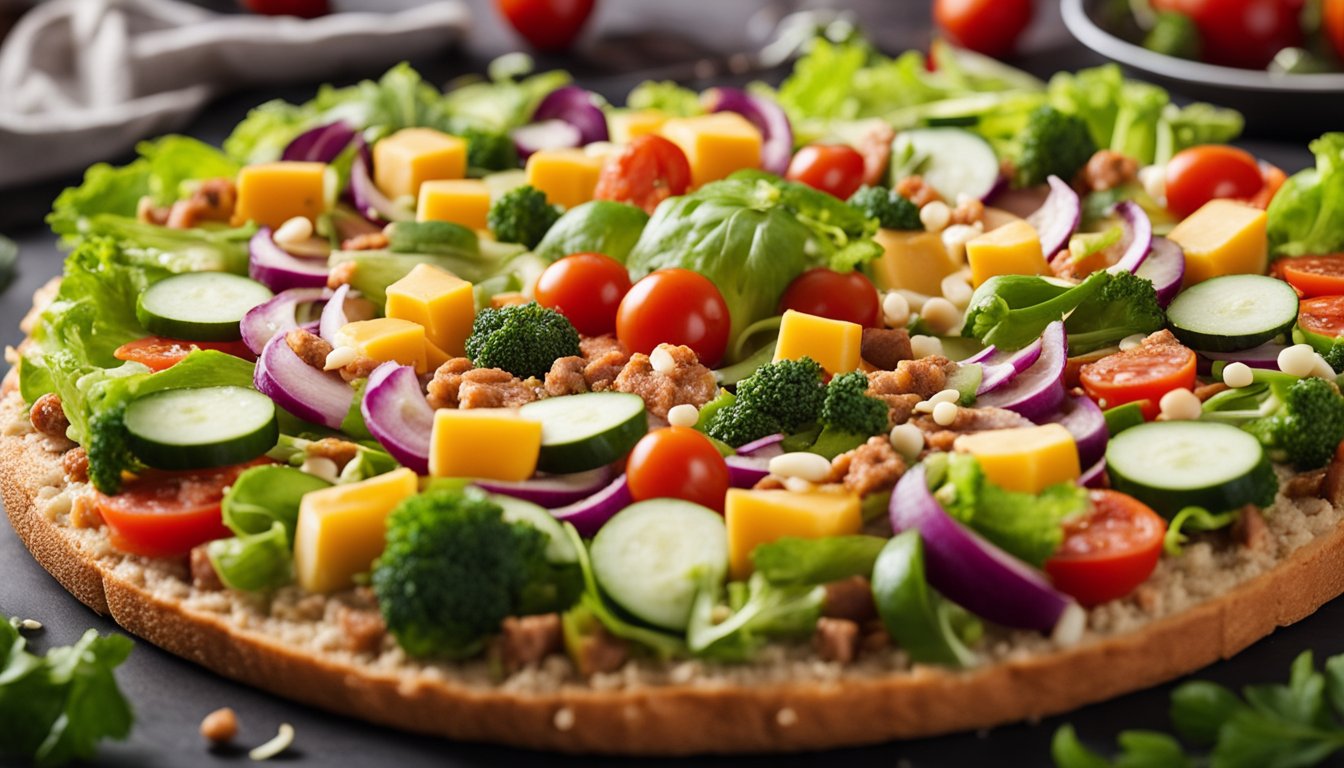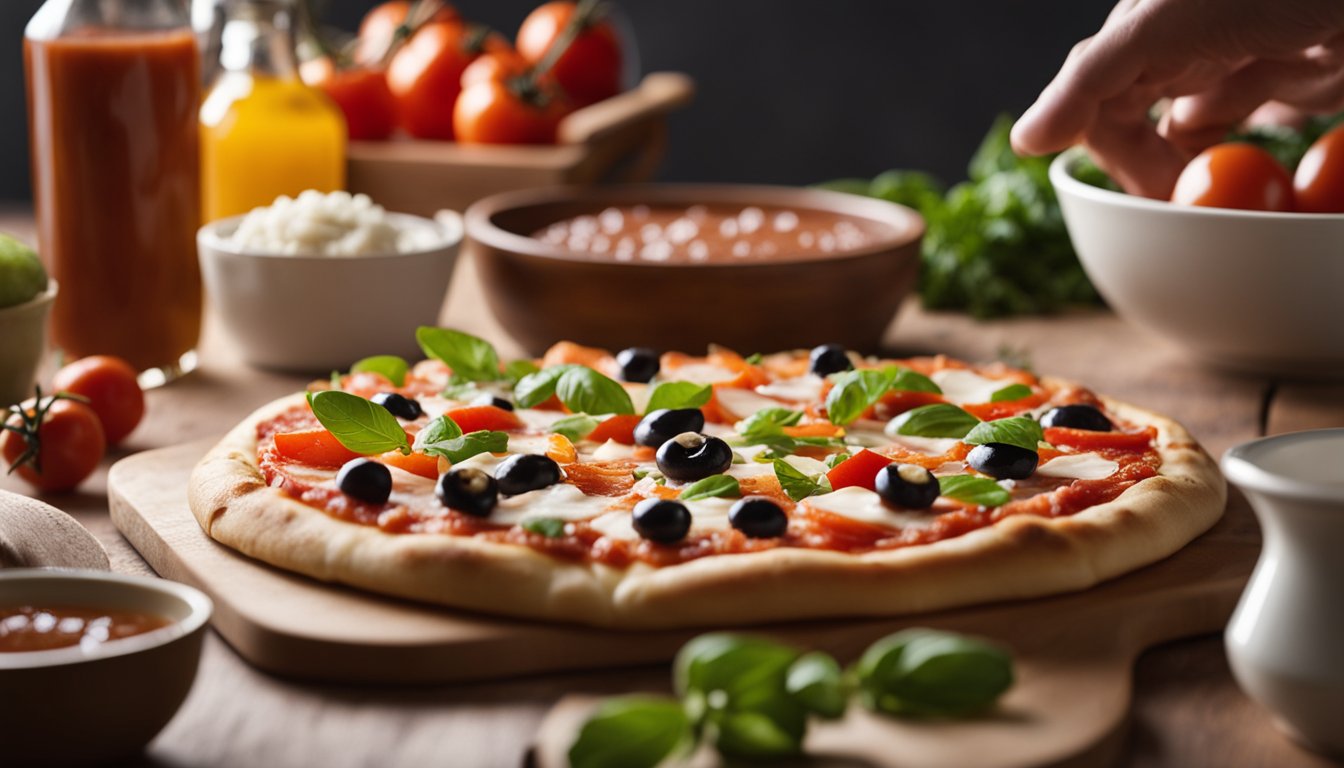Healthy Pizza Recipes
Pizza is one of the most popular foods around the world. It’s delicious, versatile, and easy to customize to your preferences. However, it’s not always the healthiest option, especially if you order from a restaurant or rely on frozen pizzas. But fear not, because we’ve got you covered with some healthy pizza recipes that are both tasty and good for you.

First up, we have a recipe for a cauliflower crust pizza. This is a great option for those who are gluten-free or looking to cut back on carbs. The crust is made from grated cauliflower, almond flour, and eggs, and it’s surprisingly sturdy and crispy. You can top it with your favorite pizza toppings, such as tomato sauce, cheese, and veggies, and bake it in the oven for a delicious and healthy meal.
Another option is a whole wheat pizza crust. Whole wheat flour is a great source of fiber and nutrients, and it’s a healthier alternative to white flour. You can make the crust from scratch using whole wheat flour, yeast, water, and a little bit of olive oil. Top it with some tomato sauce, low-fat cheese, and plenty of veggies for a nutritious and satisfying meal. With these healthy pizza recipes, you can indulge in your favorite food without the guilt.
Crafting the Perfect Healthy Pizza Dough
When it comes to making a healthy pizza, the dough is just as important as the toppings. A good dough should be flavorful, chewy, and have a nice crispy crust. Here are some tips on how to craft the perfect healthy pizza dough.
Choosing the Right Flour
The type of flour you use can make a big difference in the taste and texture of your pizza dough. For a healthier option, we recommend using whole wheat flour. Whole wheat flour is higher in fiber and nutrients than all-purpose flour, and it has a nutty, slightly sweet flavor that pairs well with pizza toppings.
If you’re looking for a gluten-free option, there are many gluten-free flours available, such as almond, rice, or quinoa flour. These flours can produce a different texture and flavor than traditional wheat flour, so it’s important to experiment and find the one that works best for you.
Gluten-Free and Whole Wheat Options
For those who want to avoid gluten, there are many gluten-free flours available that can be used to make pizza dough. Almond flour, for example, is a popular choice because it is low in carbs and high in protein. Rice flour and quinoa flour are also good options.
If you prefer a whole wheat crust, you can use whole wheat flour or a combination of whole wheat and all-purpose flour. Whole wheat flour is higher in fiber and nutrients than all-purpose flour, and it has a nutty, slightly sweet flavor that pairs well with pizza toppings.
The Role of Yeast and Fermentation
Yeast is an essential ingredient in pizza dough because it helps the dough rise and gives it a light, airy texture. There are many types of yeast available, including active dry yeast, instant yeast, and fresh yeast. Each type of yeast has its own unique characteristics, so it’s important to choose the one that works best for you.
Fermentation is also an important step in making pizza dough. During fermentation, the yeast consumes the sugars in the dough and produces carbon dioxide, which causes the dough to rise. The longer you let the dough ferment, the more flavorful and chewy it will become. We recommend letting your pizza dough ferment for at least 24 hours for the best results.
By following these tips, you can craft the perfect healthy pizza dough that is flavorful, chewy, and has a nice crispy crust. Experiment with different flours, yeasts, and fermentation times to find the combination that works best for you.
Selecting Nutritious Toppings and Sauces
When it comes to making a healthy pizza, selecting the right toppings and sauces is crucial. Here are some tips to help you choose nutritious toppings and sauces for your homemade pizza.
Vegetable Varieties and Benefits
Adding vegetables to your pizza is an easy way to increase your daily intake of vitamins and minerals. Some great vegetable options for pizza include peppers, onions, tomatoes, artichokes, olives, kale, cauliflower, and mushrooms. These vegetables are not only delicious but also offer a range of health benefits. For example, bell peppers are a great source of vitamin C, while kale is packed with vitamin K and antioxidants.
Lean Proteins for Muscle Building
If you’re looking to build muscle, adding lean protein to your pizza is a great way to do it. Chicken is a great option, as it’s high in protein and low in fat. You can also add other protein sources such as tofu, shrimp, or lean beef. These proteins will help you feel full and satisfied, while also supporting muscle growth.
Homemade vs. Store-Bought Sauces
When it comes to pizza sauce, you have two options – homemade or store-bought. While store-bought sauces are convenient, they often contain added sugars and preservatives. Making your own sauce is a healthier option, as you can control the ingredients and ensure that it’s free from any unwanted additives. To make a simple homemade pizza sauce, combine canned tomatoes, garlic, olive oil, and red pepper flakes in a blender and blend until smooth.
By following these tips, you can create a delicious and nutritious homemade pizza that’s sure to satisfy your cravings. So go ahead, get creative with your toppings and sauces, and enjoy a healthier version of this classic comfort food.
Healthy Pizza Recipes for Every Meal
Looking for delicious and healthy pizza recipes that you can enjoy any time of day? Look no further! We’ve got you covered with a variety of options that will satisfy your pizza cravings while still keeping you on track with your health goals.
Breakfast Pizza to Start Your Day
Who says pizza is just for lunch and dinner? Start your day off right with a breakfast pizza that’s packed with protein and veggies. Try a thin crust pizza topped with scrambled eggs, spinach, and mushrooms, or go for a vegan option with tofu scramble and roasted veggies.
Lunch Pizzas That Pack a Punch
For a satisfying lunch, try a thin crust pizza topped with grilled chicken, veggies, and a sprinkle of cheese. Or, go for a vegan option with roasted veggies, vegan cheese, and a drizzle of balsamic glaze. Want something a little more spicy? Try a Hawaiian pizza with jalapenos and pineapple for a sweet and spicy kick.
Dinner Pizzas for a Satisfying End
End your day with a delicious and healthy dinner pizza. For a low-carb option, try a cauliflower crust pizza topped with your favorite veggies and grilled chicken. Or, go for a classic thin crust pizza with tomato sauce, fresh mozzarella, and basil. Feeling adventurous? Try a spicy hawaiian pizza with bacon and jalapenos.
Snack and Dessert Pizzas
Pizza isn’t just for meals – it makes a great snack or dessert too! Try a fruit pizza with a sugar cookie crust and topped with fresh berries and a drizzle of honey. Or, go for a mini pizza topped with Nutella and sliced bananas for a sweet treat. Leftover pizza also makes a great snack option – just reheat and enjoy!
No matter what time of day, there’s a healthy pizza recipe that’s perfect for you. Whether you’re feeding yourself, your family, or a group of friends, these options are sure to satisfy everyone’s cravings. So go ahead and indulge in some delicious pizza – without any guilt!
The Art of Healthy Pizza Assembly and Cooking

When it comes to making a healthy pizza, the key lies in the art of assembly and cooking. With the right combination of ingredients and techniques, you can create a delicious and nutritious pizza that satisfies your cravings without compromising your diet.
Balancing Flavors and Textures
To make a healthy pizza, it’s important to balance the flavors and textures of the ingredients. Use a variety of fresh veggies such as bell peppers, mushrooms, onions, and tomatoes to add crunch and flavor to your pizza. For a protein boost, add shredded chicken or prosciutto. To add some freshness and flavor, sprinkle some fresh basil or baby arugula on top.
Baking Techniques for the Perfect Crust
A healthy pizza starts with a good crust. Instead of using regular pizza dough, opt for a whole wheat crust for added fiber and nutrients. You can also use a flatbread or even make your own homemade pizza dough. To get the perfect crust, use a pizza stone and preheat your oven to the highest temperature possible. Bake the pizza for 8-10 minutes or until the crust is crispy and golden brown.
Creative Presentation Ideas
Presentation is key when it comes to making a healthy pizza. Try using a variety of colorful veggies to create a visually appealing pizza. You can also experiment with different sauces such as pesto or tomato sauce. To keep your pizza low-fat, use low-fat cheese or skip the cheese altogether.
In conclusion, making a healthy pizza is all about using fresh, nutritious ingredients and the right cooking techniques. By following these tips and being creative with your toppings, you can enjoy a delicious and guilt-free pizza that satisfies your cravings and supports your healthy lifestyle.


